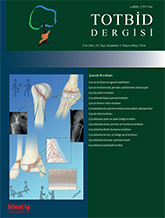
The most common fractures in childhood are in the forearm, wrist and hand. Forearm and wrist fractures are usually caused by indirect trauma, while fractures in the hand region are usually caused by direct trauma. The mechanism, type and localization of the fracture and the age of the child are the factors that determine the treatment. Children`s bones have a high remodeling capacity so most fractures of this region are treated conservatively. Most displaced forearm wrist fractures are treated with a reduction maneuver and casting applied in the opposite direction of traction and deforming force. Surgery is required for irreducible fractures, open fractures, and loss of reduction during follow-up. Kirschner wire fixation, intramedullary elastic nails and rarely plates are used in surgical treatment. Most of the fractures in the hand region in childhood are treated with conservative methods. In cases requiring surgery, fixation of the Kirschner wire after reduction is usually sufficient.